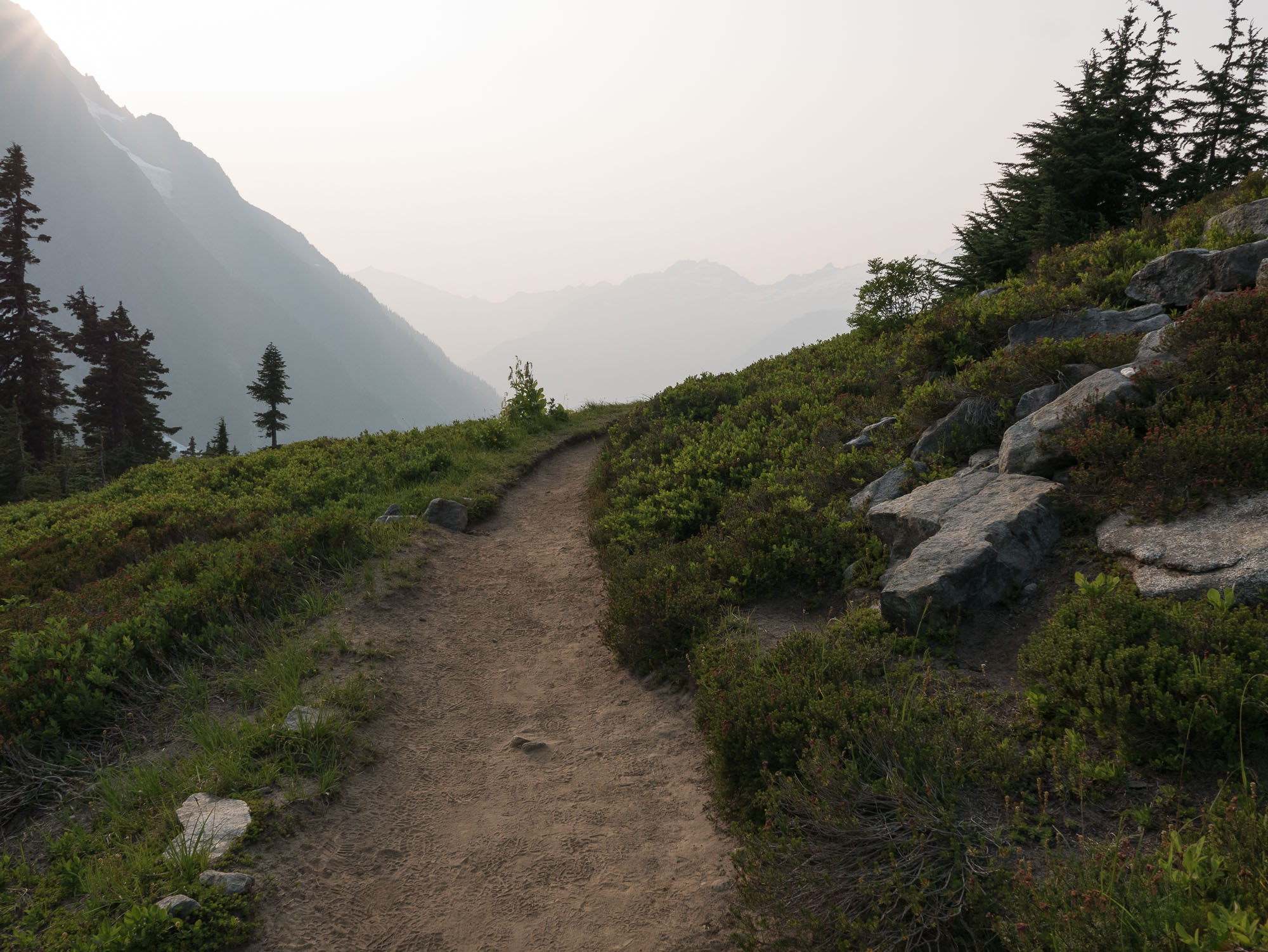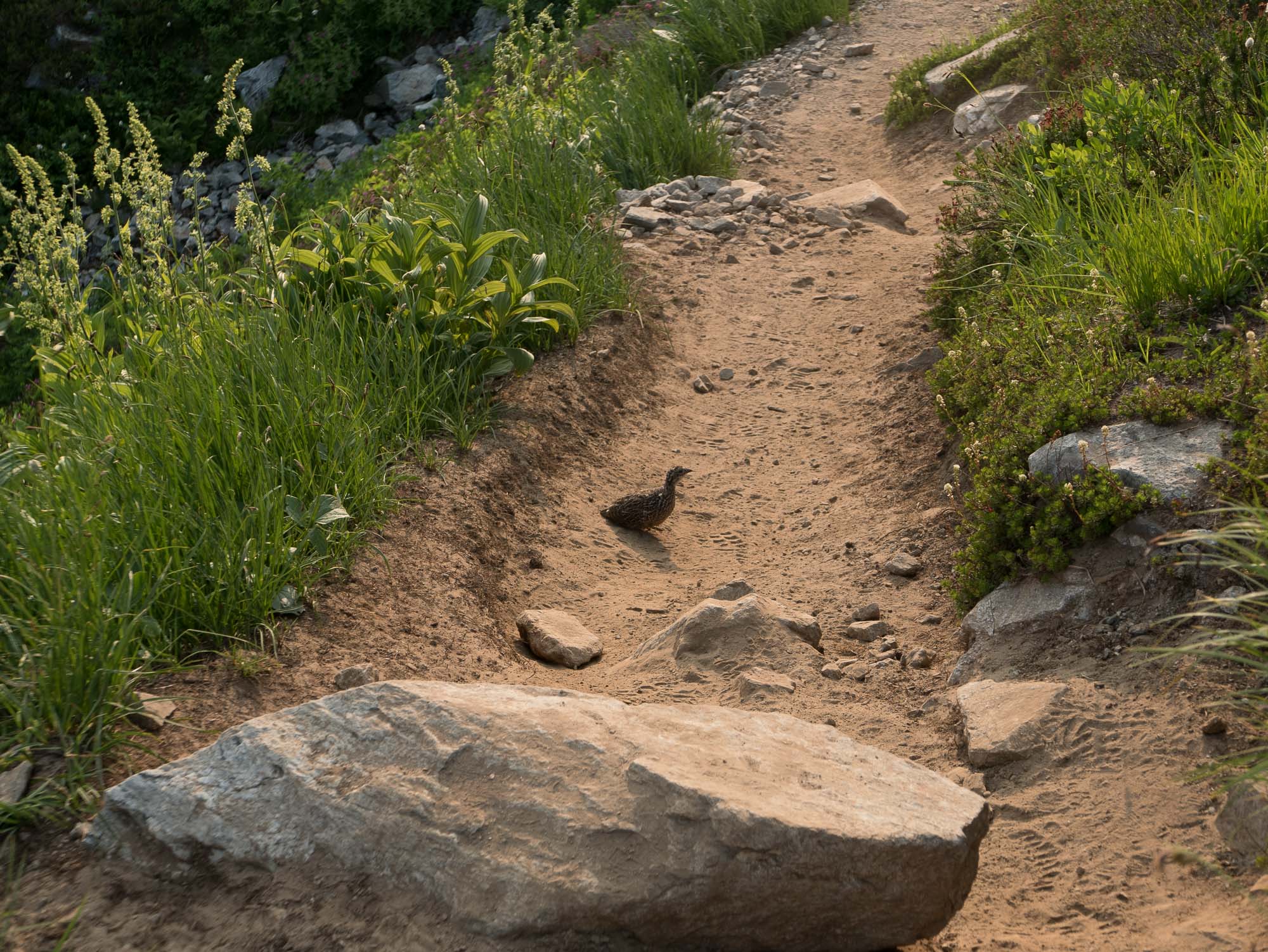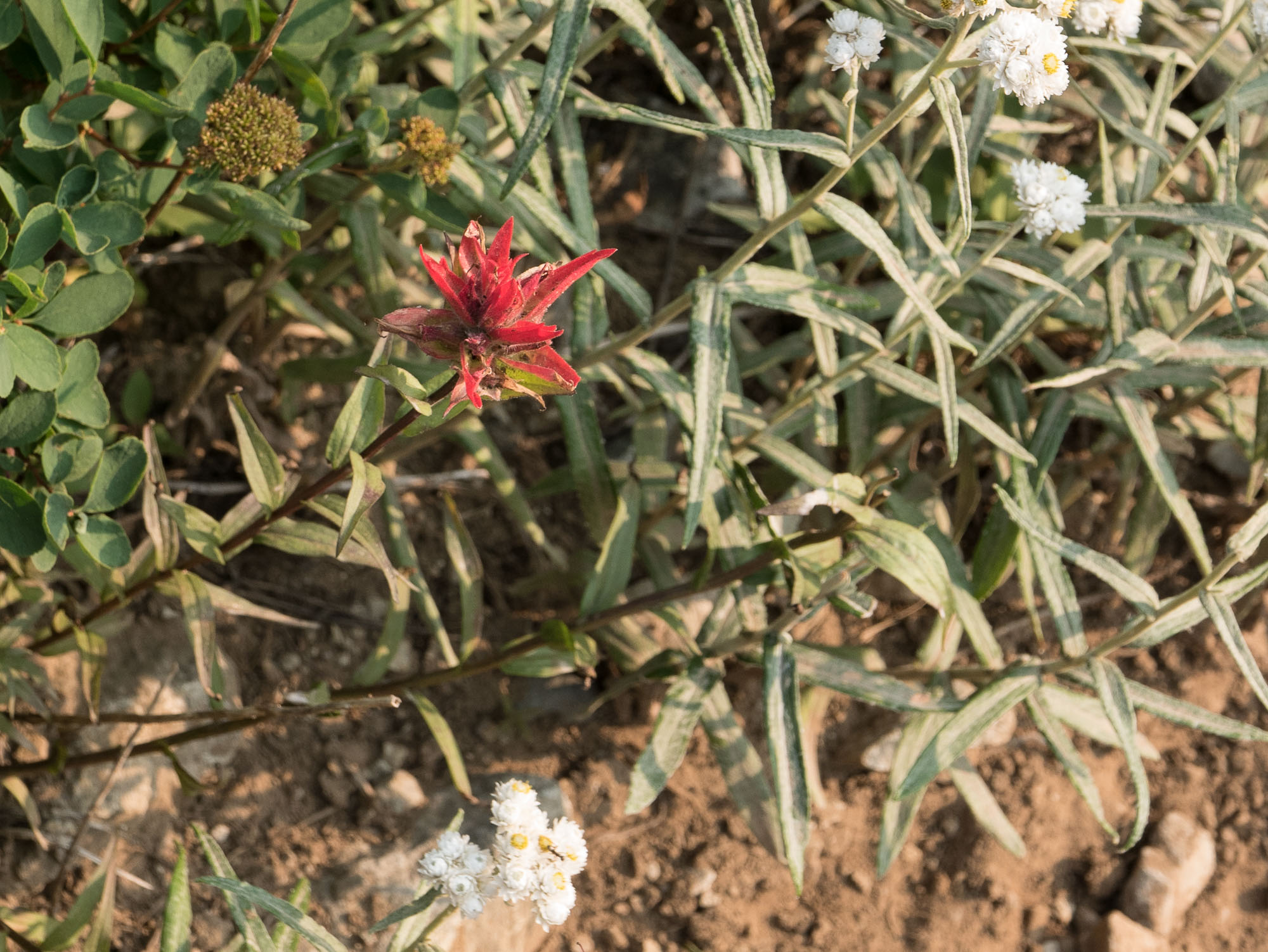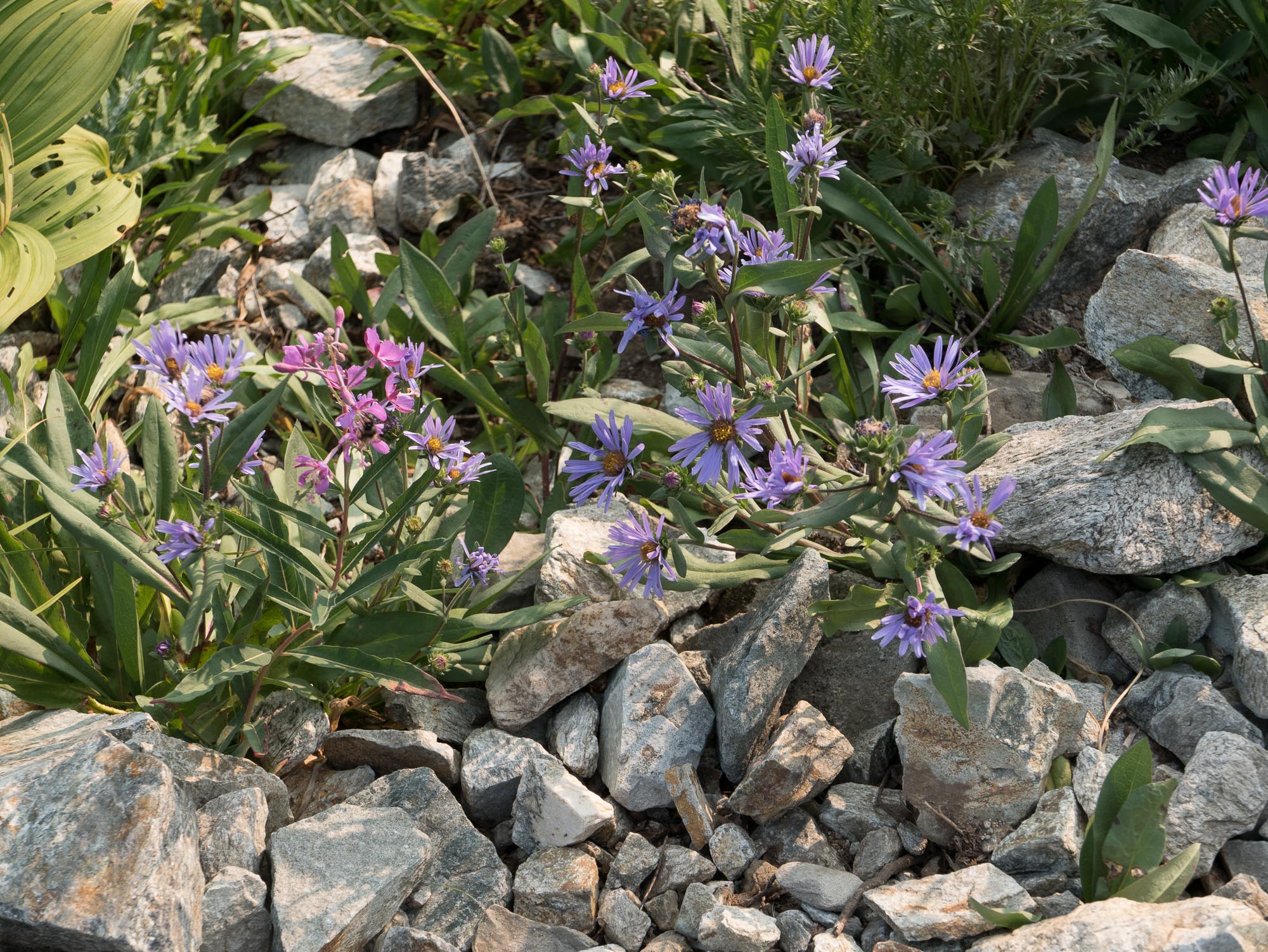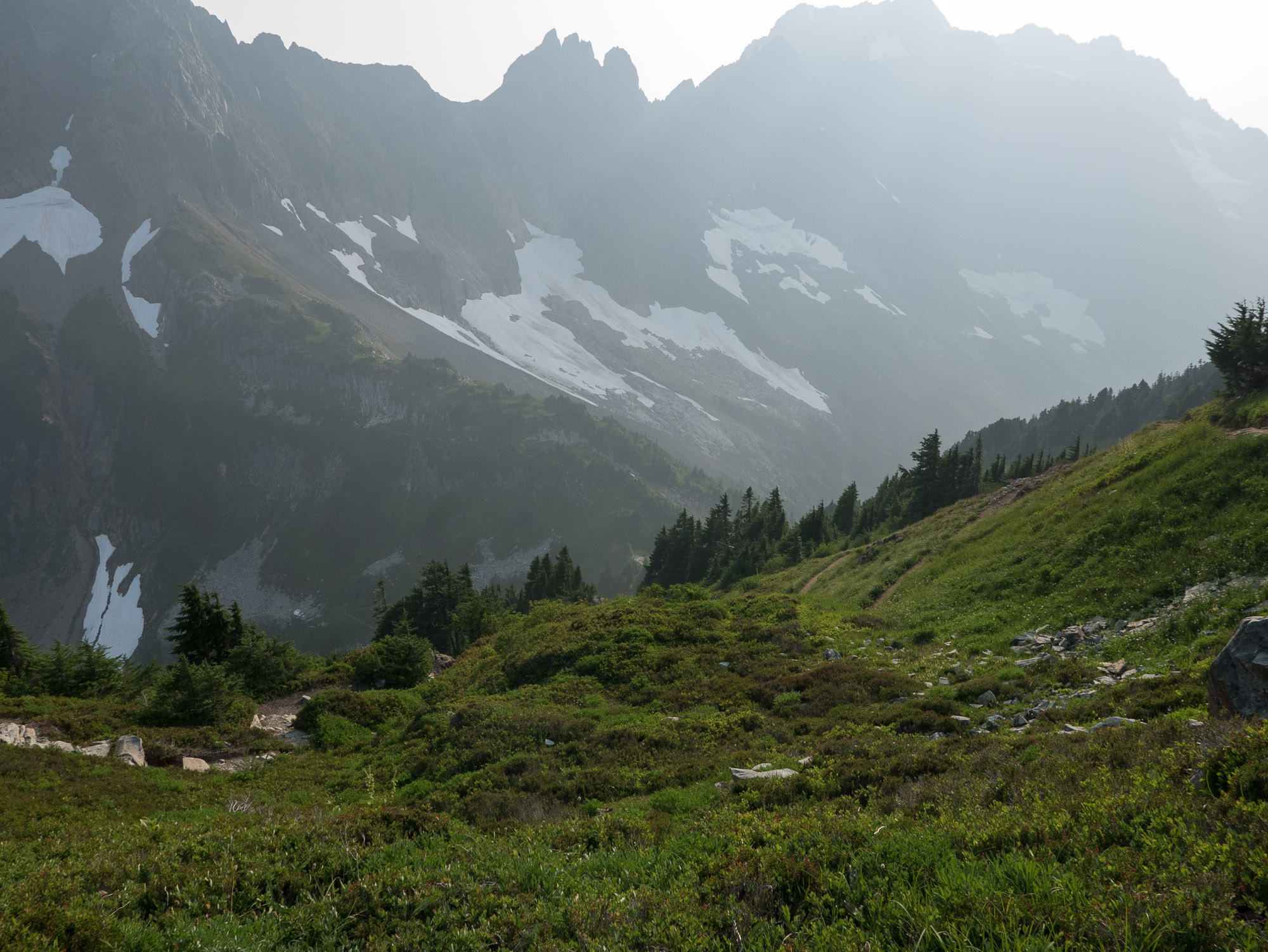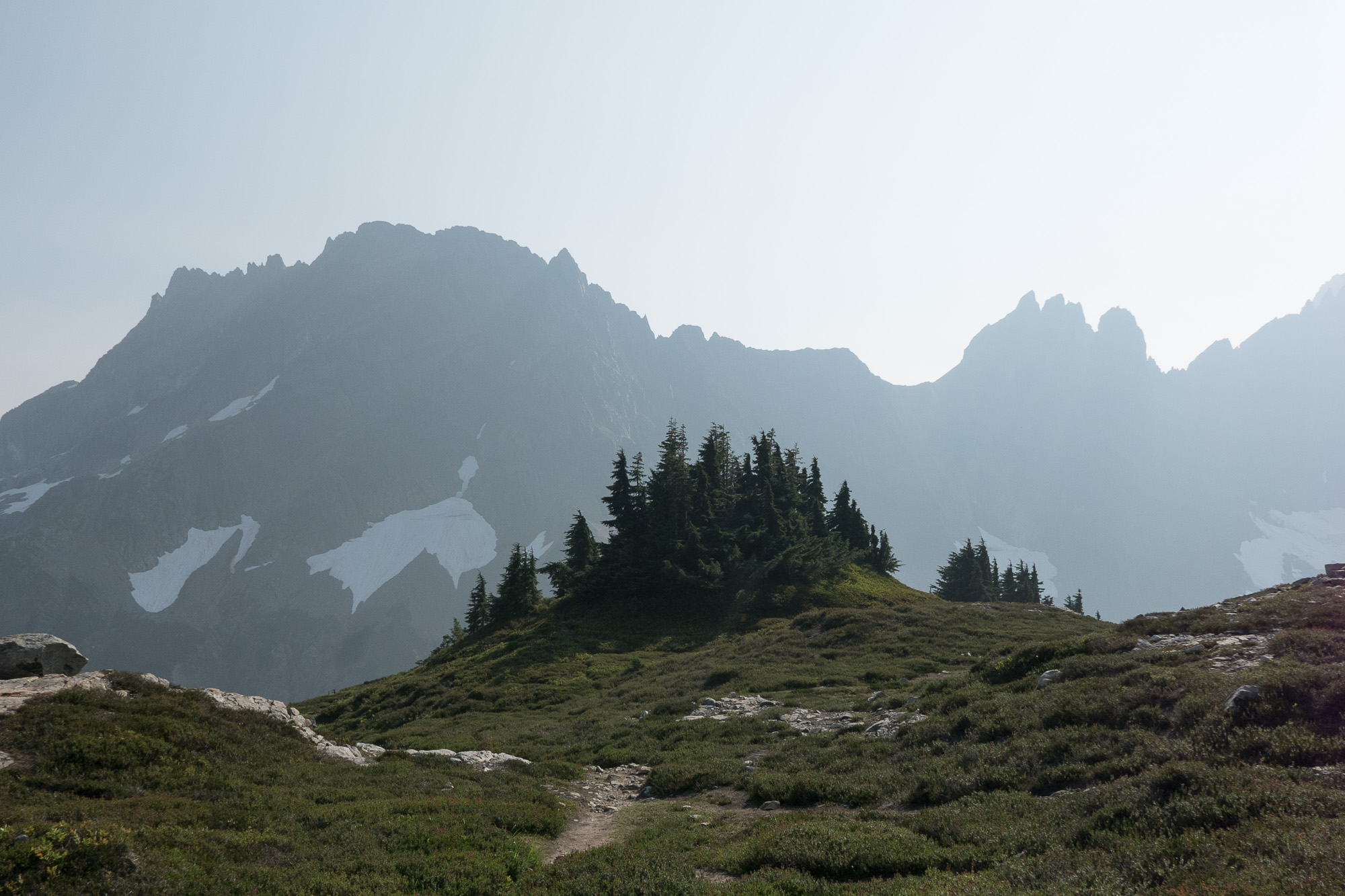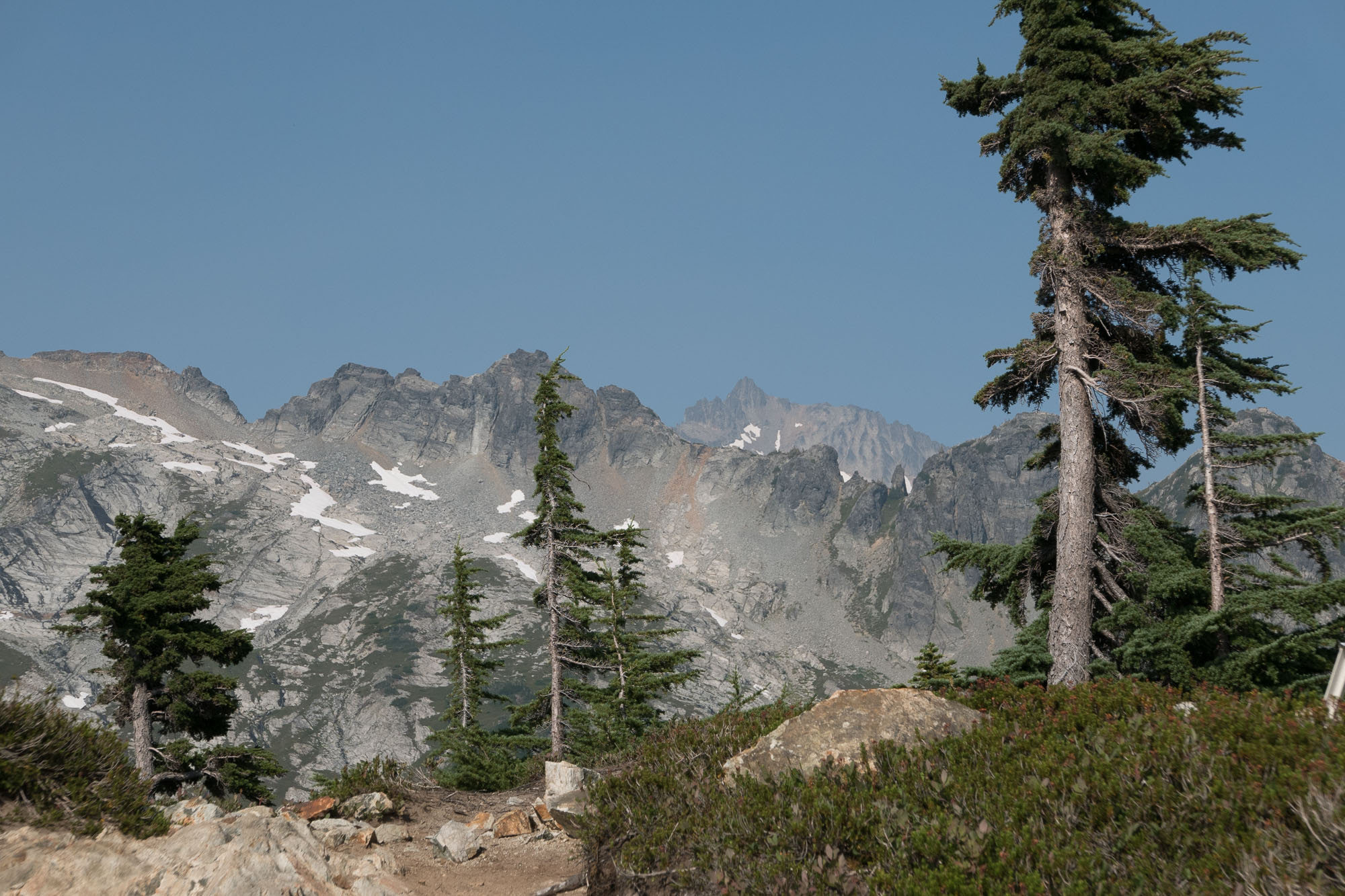In the process, I lost a favorite camera to another rock. This camera was a Leica T109, probably a rebranded Panasonic with Leica glass. It’s a 4/3 compact camera but it fit easily into my pants pocket, had a terrific set of features including a viewfinder that I really liked, and it was very capable for this type of camera. It was a real workhorse for me and was my best go-to travel camera.
****
It was an odd day from the get-go. I dawdled, as I too often do these days, and got a late start from Seattle. I left about 10:30 AM, a little late for a hike in North Cascades National Park. The closest edge of the park is about 2-½ hours from Seattle on a day with light traffic, and most trailheads are a bit remote and require an additional 30-60 minutes of driving. It’s summer and there’s no such thing as light traffic in or around Seattle anymore on these long days. Plus, there were several long middle-of-nowhere back-ups on I-5 due to the summer road repair season. Spontaneity is a thing of the past, it seems. But leaving at 10:30 AM was late even in the earlier Age of Spontaneity.
It’s been smoky in Washington in recent weeks due to many forest fires and when I pulled into the small foothills town of Concrete off the North Cascades Highway, you could barely see the mountains ahead of you. Everything looked dingy and crispy dry. I almost decided to turn back around and try another day, but I went on. As I thought might happen, as I got closer to the mountains, the smoke always seemed further ahead so, though hazy, I’d still get some views.
On the drive up the Cascade River Road, in the upper reaches where it can be rough, especially for a passenger car, and where it washes out almost every winter, there was a small passenger car that went off the edge of the road. It’s basically a single lane road up there with few pullouts and I suspect the young driver drove to the edge to let another car pass on its way down. He misjudged a little and his right wheels slipped off the partially sunken road and the car had bottomed out. I felt bad for him, but he was probably a little lucky. He went off in a small section with asphalt. If it had been only dirt and rocks, he may have slipped completely off the edge and down quite far into the forest below. A tow truck had already arrived by the time I reached him and was preparing to pull him out. The closest town is Marblemount, about 23 miles down the Cascade River Road, the uppermost 13 miles of them unpaved and a bit rough. But the tow truck service had him pulled out in about 15 minutes (there was a lot of scraping as to be expected, but the car wasn't leaking any oil or other fluids) and about 15 minutes later, I arrived at the dusty trailhead. With the added traffic and tow delay, I had lost about an hour.
I started on the trail about 2:30 PM, the latest start time I’ve probably had for a day hike of this nature and distance. Due to that late start, I hiked only about 6 miles up to and along Sahale Arm, a little less than I usually do. I believe it is 6-½ to 7 miles to the climber’s camps at the base of Sahale glacier. I set a 5:00 PM turnaround time for myself and modified it to 5:45 PM up on the arm. I didn’t want to hike out in the dark which is so often the case with me on this trail.
In the early evening on my way back down, I stopped to take a couple of photos from the trail as the sun set behind Hidden Lake Peak. I was in the easy lower forest with probably less than two miles remaining before reaching my car. After snapping the last of the photos, I turned to my left to continue to head down the trail. I must’ve been closer to the edge than I realized. My right foot fell into the void when I was expecting ground. Instantly I had that "oh no" thought – though I was thinking something other than no �– and before I knew it I was falling and crashing head first through trees and rocks. I couldn’t stop the fall or arrest myself, and only came to a hard stop when the top of my head met a large granite boulder. I was wearing a canvas ‘fisherman’s’ crusher hat and that cushioned my head a little, but not much. It probably prevented a more serious cut.




